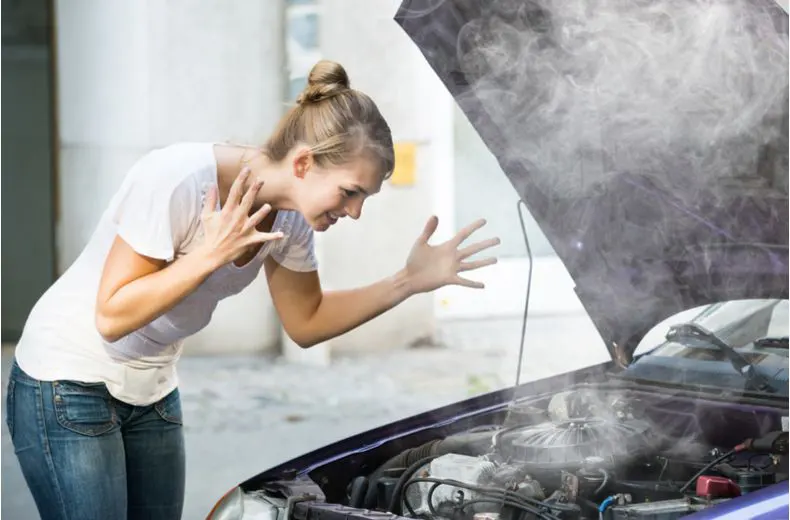A car frozen by the side of the road, an open hood, confused people in puffs of steam … Everyone saw this picture on the road in the summer, passing by and sympathizing. And how to act in such a situation yourself? Keep reading to figure out why the engine boils, how to monitor its temperature and what to do in case of overheating.
Why Is My Car Overheating?
It is not the engine itself that boils, but its coolant (antifreeze). At the same time, the engine overheats, and significantly. To be honest, pushing the antifreeze to the limit is quite difficult – it requires a temperature of about 130 ° C, since the liquid in the cooling system is under pressure (with a working radiator cap). Normal motor temperature: 80–90 °C. Even if the engine overheats by 20-30 ° C, antifreeze is still far from required.
Where, then, do the puffs of steam come from under the hood? It’s simple: when the temperature rises, the antifreeze expands, overflowing the expansion tank of the radiator, and pours out onto the hot engine, transmission and other components. In doing so, he loses pressure, which helps him not to boil inside the cooling system. Once in the engine compartment, the antifreeze boils, almost like water (at a temperature of about 100 ° C), and evaporates intensively – hence the steam.
Causes of Engine Overheating
Low Antifreeze Content.
It’s possible that there isn’t enough coolant to properly cool the engine. Antifreeze levels typically decrease as a result of leaks. Thermostat stuck. The radiator cannot cool normally if the thermostat is partially open because only a portion of the antifreeze gets into the radiator. radiator obstruction Insects, vegetation, and poplar fluff clog radiator cells, making it difficult to remove heat.
Thermostat stuck.
The radiator cannot cool normally if the thermostat is partially open because only a portion of the antifreeze gets into the radiator. radiator obstruction Insects, vegetation, and poplar fluff clog radiator cells, making it difficult to remove heat.
Cooling Fan Malfunction.
When the viscous connection fails, electric fans stop working and mechanical fans (powered directly from the engine) spin at idle.
Wear or Failure of the Pump.
Due to low-quality or old antifreeze, the impeller of the water pump gradually “eats”, which impairs the circulation of antifreeze.
Loss of Tightness of the Cooling System.
The easiest option is a broken radiator cap. The most difficult is the breakdown of the cylinder head gasket and the breakthrough of crankcase gasses into the system.
The Cooling System Just Can’t Handle It.
Some cars are prone to overheating under load even with a fully working cooling system – it’s just not efficient enough due to too tight underhood space, engineering miscalculations or economy.
What To Do if the Engine Overheats
1.Turn on the stove to the maximum
Yes, turning on the heater in the summer heat is not very pleasant, but this is the only way to quickly and safely cool the engine. The stove is part of the cooling system and takes heat from it – this is what is needed when overheating. Set the maximum temperature and airflow on the climate control, turn off the air conditioner (it loads the engine) and open the windows so as not to boil yourself.
2.Turning off the Engine Is Definitely Not Worth It
If, after your actions, hot air blows out of the air ducts – excellent, then there is antifreeze in the system, and you are successfully removing excess heat. In this case, it is definitely not worth turning off the engine.
3.You Don’t Have To Stop the Car Either
The ram air cools the antifreeze in the radiator, lowering the engine temperature. It is best to continue driving, reducing the speed so that the load on the motor is minimal. The ideal scenario is to coast down a mountain.






